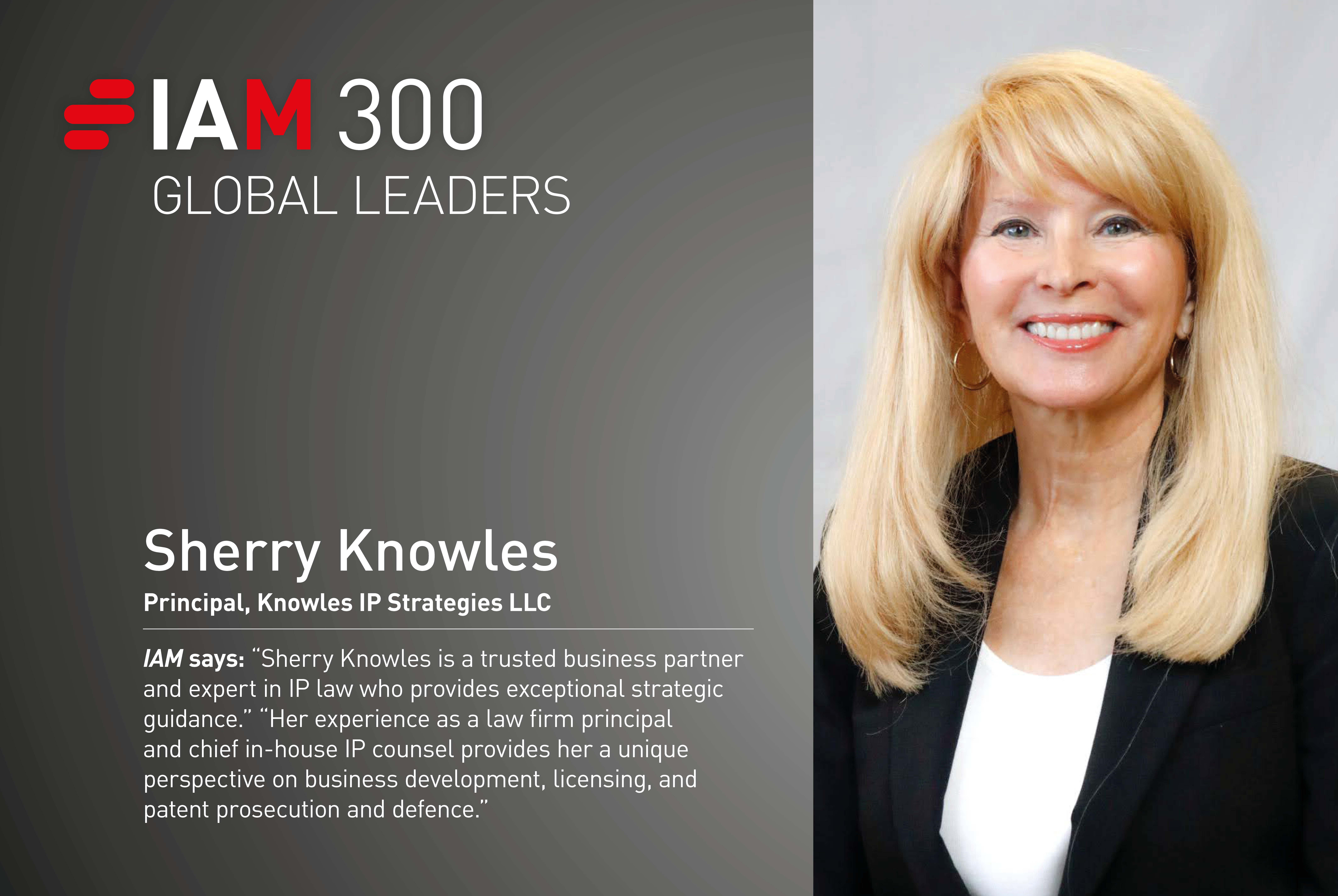Sherry Knowles
Before you started your own firm, you were the worldwide head of patents for all litigation and transactional matters at GlaxoSmithKline. As a litigation expert, what are three top tips for an effective portfolio enforcement strategy?
This is an interesting question as it focuses on defending patents not attacking patents, which can have different approaches. My first tip is to start with good patent drafting and prosecution. Patent attorneys should have the mindset that each patent they draft will be litigated and use this approach to double-check their work before filing. The best defence of a patent is to have a thorough and well-detailed specification that clearly indicates what the invention is. Patent attorneys can’t write a good application unless they actually deeply understand the invention itself, so taking the time to do this is crucial. I have read patents where I have been convinced that the drafter didn’t fully understand the invention, so the specification is confusing and garbled. Don’t overly rely on ‘boilerplate’ or ‘cut and paste’ sections to do the work of the disclosure. Tell a story. Include clear and bounded definitions where required. In the United States, the written description and enablement requirements are becoming more important in litigation. Therefore, patent attorneys need to make sure that they provide sufficient examples in the specification that are representative of the entire scope of their claims.
Second, do early comprehensive searching of the prior art so that you are well-prepared. Where possible, identify and consider the closest prior art before drafting the application. Early preparation with a specification that points out the advantages of the claimed invention will be helpful to a judge or jury. When prosecuting the application in the United States and other countries, make sure the prior art is disclosed to the patent office appropriately. If the patent attorney is working on an application that covers a potential drug in clinical trials, make sure you are up to date on what the company is saying to regulatory agencies, and that the statements are consistent with statements to the patent office.
Finally, train the staff at your company so that if litigation in the United States is a possibility, your documents are well organised before any litigation arises. Scientists and staff should be taught to take care in all written forms of communication, including emails, memos to file, reports and presentations. Be conservative with statements and write everything with the view that it could one day be read by a judge.
Your firm represents biopharma clients in the northeast and west coast of the United States. What, if any, are the key differences between these locations, and how do you adapt your strategy for each?
We represent clients all over the world! My experience has been that clients in the United States require a fairly similar approach across the board, but clients in different countries around the world vary significantly. Many are not familiar with US prosecution or litigation. Since global legal systems vary, international clients have different training and experience. Companies should identify their key markets early in the innovation process and get the proper legal advice in each market before even drafting their patent applications. The best preparation comes from patent specifications that satisfy the requirements in all of the client’s key jurisditions.
What were the biggest challenges facing your clients in the past 12 months, and how have you helped them to overcome these?
My biggest concern has been how the courts and the USPTO have been willing to create patent law that adversely affects innovators without the constitutional right to do so – such power is limited to Congress. Two examples are the Supreme Court law on patent eligibility and the court and USPTO doctrines on non-statutory obviousness-type double patenting. This has been expanding following the Federal Circuit case In re Cellect. I urge patent attorneys to make their voices heard on this issue, to limit the scope of the courts and the USPTO to make up legislation without the power to do so.
How do you educate and retain key talent at Knowles IP Strategies?
We work closely as an integrated team, from senior partner to patent attorney to paralegal, and every day is a hands-on learning experience. We value diversity of backgrounds, which is helpful in global work. We have employees from China, India, Russia and Guyana and are always seeking top-tier thinkers from the United States and other countries.
Sherry Knowles
Principal
[email protected]
Sherry M Knowles is an IP attorney with over 30 years of experience in global corporate and private practice. From 2006 to 2010, she was senior vice president and global chief patent counsel at GlaxoSmithKline. Ms Knowles is now senior partner at Knowles IP Strategies, providing counsel on all aspects of biopharmaceutical patent law, including prosecution, adversarial matters, licensing, opinions and policy. She was inducted into the IPWatchDog Hall of Fame in 2023.
